
Unlocking Advanced Bonsai Propagation Secrets: Expert Tips for Success
Unlocking advanced bonsai propagation secrets isn’t just about growing more trees—it’s about mastering a deeper connection with your miniature forest. While beginner guides teach the basics, true bonsai enthusiasts eventually crave techniques that go beyond the ordinary. If you’ve ever wondered how experts create stunning, mature-looking bonsai from scratch or how they coax roots from challenging cuttings, you’re in the right place. In this guide, we’ll reveal expert-level methods that not only improve your success rate but also elevate your artistry. Whether you’re refining your skills or ready to take on your first serious propagation project, let’s dig in.
Table of Contents
Toggle🌱 Understanding Bonsai Propagation: A Quick Recap 🌿
Before we dive into the advanced bonsai propagation secrets, it’s important to understand the basics of how bonsai propagation works. This foundation will help you appreciate the expert techniques you’ll learn later.

🌳 What is Bonsai Propagation? 💚
Propagation is the process of creating new bonsai trees from existing plants. It allows you to grow more trees with specific traits you love—whether it’s the shape of the trunk, leaf size, or branch pattern.
Here are the most common methods:
- Seeds: Growing from seeds gives you full control over shaping, but it takes years to develop into a mature bonsai. Patience is key! 🐢
- Cuttings: One of the most popular methods. You take a healthy branch, root it in soil or water, and grow a new plant. Fast and rewarding! 🌿
- Air Layering: This involves encouraging roots to form on a branch while it’s still attached to the parent plant—great for mature branches you want to turn into bonsai. 🌬️
- Grafting: Used to combine strong rootstock with beautiful top growth. Ideal when you want a specific structure or style. 🔧
Each method has pros and cons depending on your goals, species, and growing conditions. Understanding these basics prepares you to explore more advanced and creative bonsai propagation techniques. Let’s move into the exciting part next! ✨🪴
⏳🌿 Choosing the Right Time and Plant Material
One of the biggest secrets to successful bonsai propagation is timing and plant selection. Even advanced techniques can fail if you don’t start with the right material at the right moment.
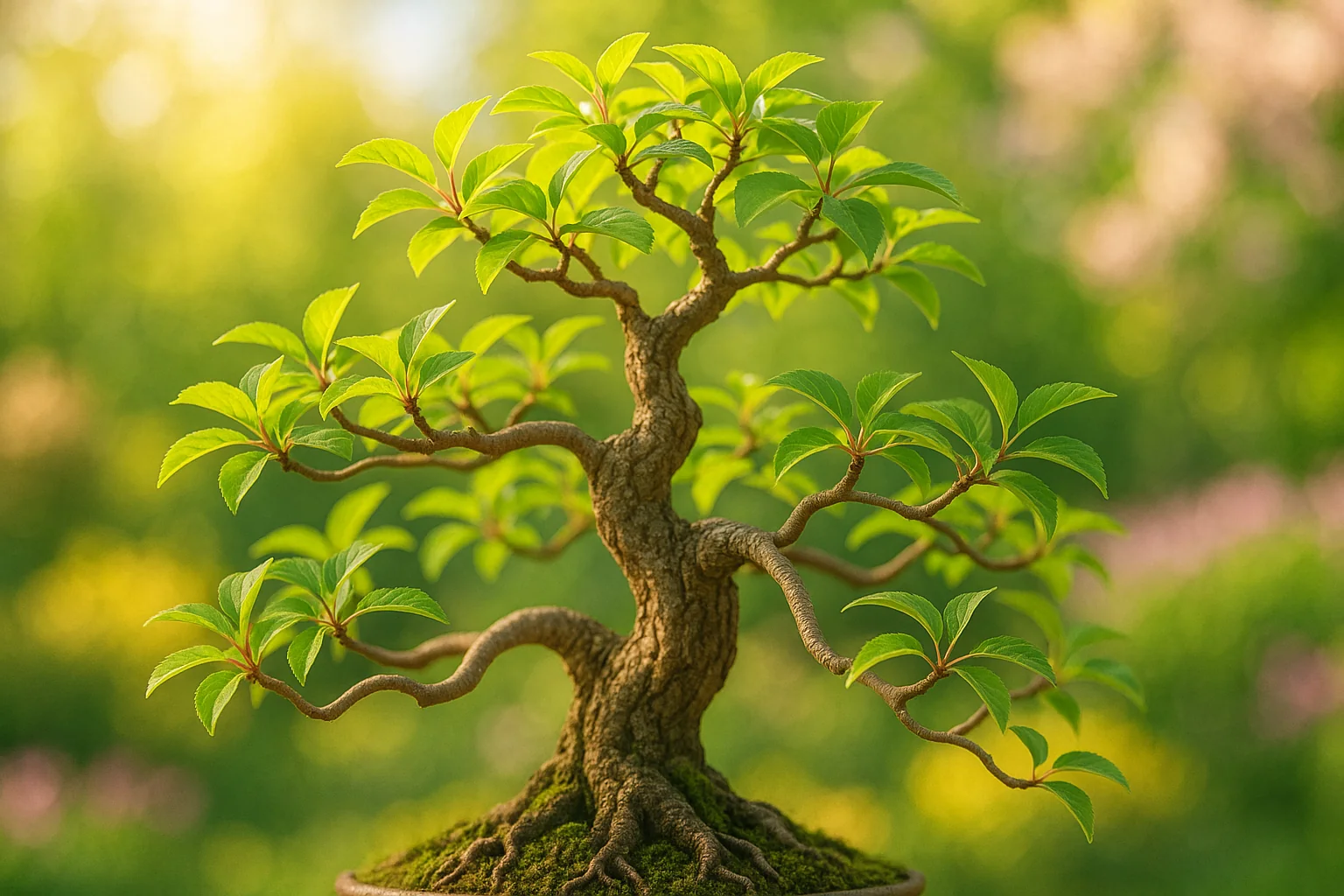
🌸 Best Time to Propagate
- Spring to early summer is ideal for most bonsai species.
- During this time, plants are actively growing and recover faster.
- Avoid cold winter months unless you’re working with hardwood cuttings indoors.
🌿 How to Choose the Right Plant Material
- Pick a healthy, mature bonsai or parent plant—no signs of disease or stress.
- Look for young, flexible branches with strong nodes. These root more easily.
- For grafting or layering, select woody stems that are thick enough to support new growth.
✅ Pro Tips
- Always sanitize tools before cutting to prevent infection. 🧼✂️
- Use rooting hormone to boost success when working with cuttings or layering.
- Choose species like juniper, ficus, or maple—they respond well to propagation! 🍁
With the right timing and plant material, your propagation efforts will be smoother, stronger, and far more rewarding. Let’s move on to the first advanced technique! 🌱✨
🧰 Tools and Materials Checklist for Bonsai Propagation
✂️ Cutting & Grafting Tools
- Sharp bonsai scissors or pruning shears
- Grafting knife or precision blade
- Root cutters (for air layering or root division)
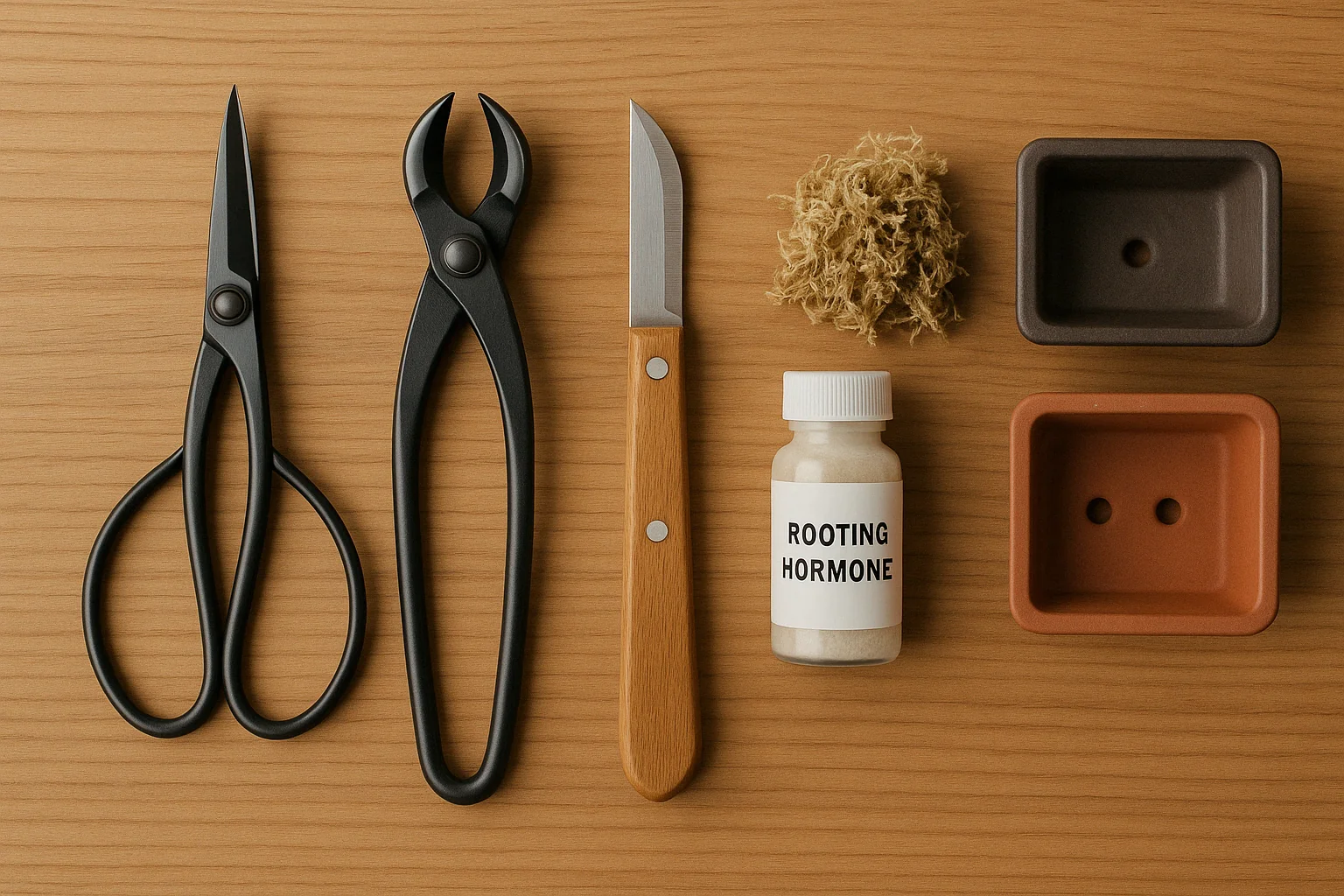
🪴 Propagation Essentials
- Rooting hormone (gel or powder)
- Sphagnum moss (for air layering)
- Bonsai soil mix (well-draining)
- Small pots or trays
- Humidity domes or plastic covers
🧼 Sanitation Supplies
- Rubbing alcohol or bleach solution (for sterilizing tools)
- Gloves (optional but handy)
🌡️ Monitoring & Care
- Spray bottle (for misting cuttings)
- Plant labels and a pencil
- Heat mat (for bottom warmth if needed)
- Moisture meter or your finger! 💧
📒 Optional but Helpful
- Bonsai wire (for shaping young plants)
- Gardening journal (track progress and experiments)
- Soft brush (to clean tools and soil from delicate roots)
🌿✨ Secret #1: Mastering Air Layering for Bonsai 🌳
Air layering is one of the most powerful advanced bonsai propagation secrets. It allows you to grow new trees from mature branches—perfect for creating well-developed bonsai faster! 💨🌳
🌱 What Is Air Layering?
Air layering involves encouraging roots to grow on a living branch while it’s still attached to the parent plant. Once roots develop, the branch is cut off and planted as a new bonsai. 🪴
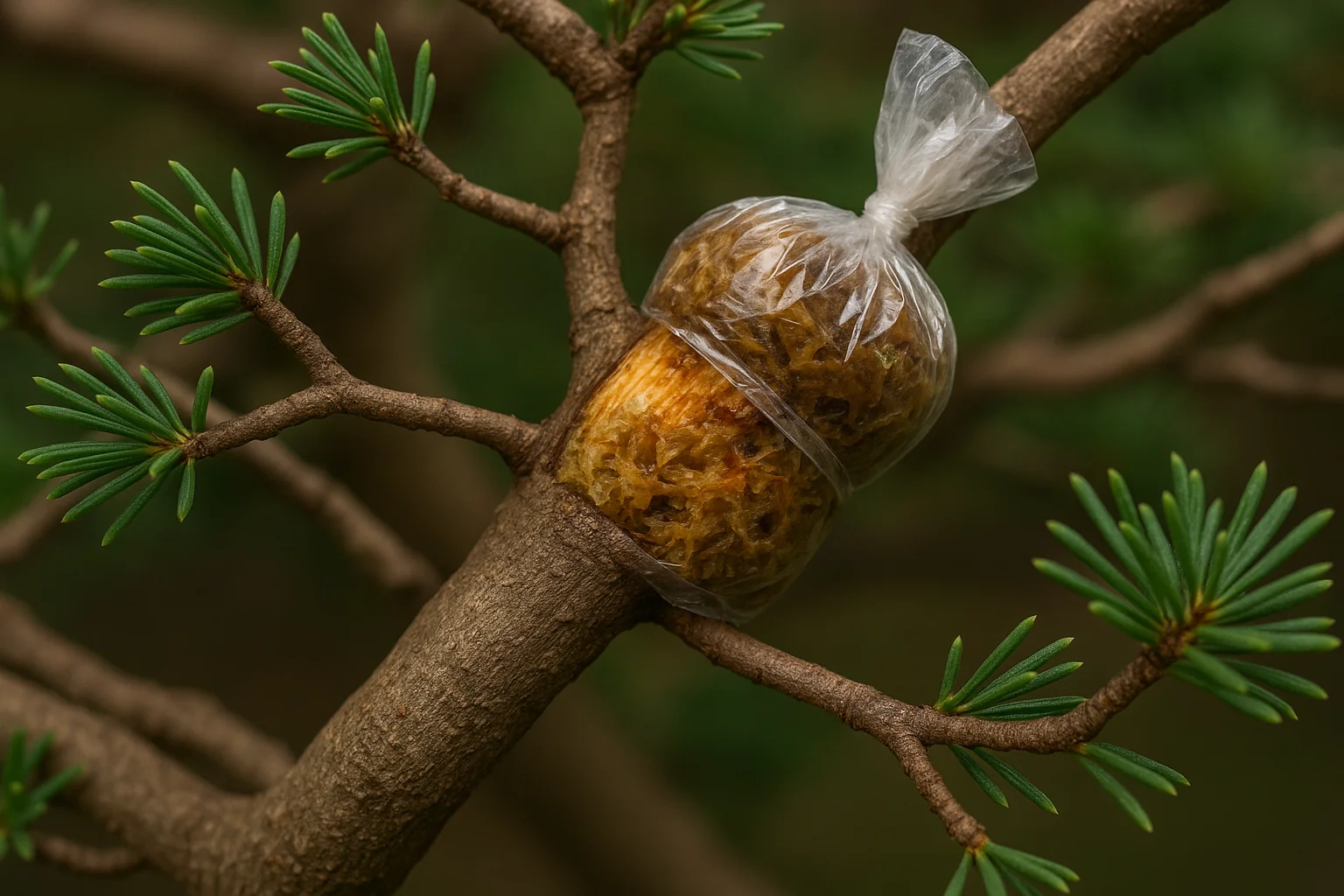
🛠️ How to Do It – Step by Step
- Choose a healthy branch (pencil-thick or more) with plenty of leaves.
- Remove a ring of bark (about 1 inch wide) to expose the cambium layer.
- Apply rooting hormone to the exposed area.
- Wrap with moist sphagnum moss and cover with plastic wrap or foil.
- Secure both ends to keep moisture in.
- Wait 4–8 weeks for roots to form, checking occasionally.
- Once roots are visible, cut the branch below the root ball and pot it! 🌱✂️
🌿 Best Bonsai Species for Air Layering
- Ficus
• Trident maple
• Azalea
• Juniper (with care)
✅ Pro Tips
- Do it in spring or early summer when the plant is actively growing.
• Keep moss consistently moist—dry moss = no roots! 💧
• Use clear plastic wrap so you can check root progress. 👀
Air layering lets you shape your bonsai even before it becomes independent. It’s a magical trick that feels like plant alchemy! 🧪🌳
🌿🔗 Secret #2: Grafting for Perfect Structure and Design 🌳
Grafting is a game-changer for bonsai propagation. It’s an advanced technique that allows you to combine two different plants into one, creating the perfect structure, growth, and design for your bonsai. 🌳✨
🌱 What is Grafting?
Grafting involves joining two plant parts—typically a strong rootstock (the lower part) and a desirable top (scion). This union forms a new, stronger plant. In bonsai, grafting allows you to create custom shapes, improve growth, and repair damaged trees. 🔧🌿
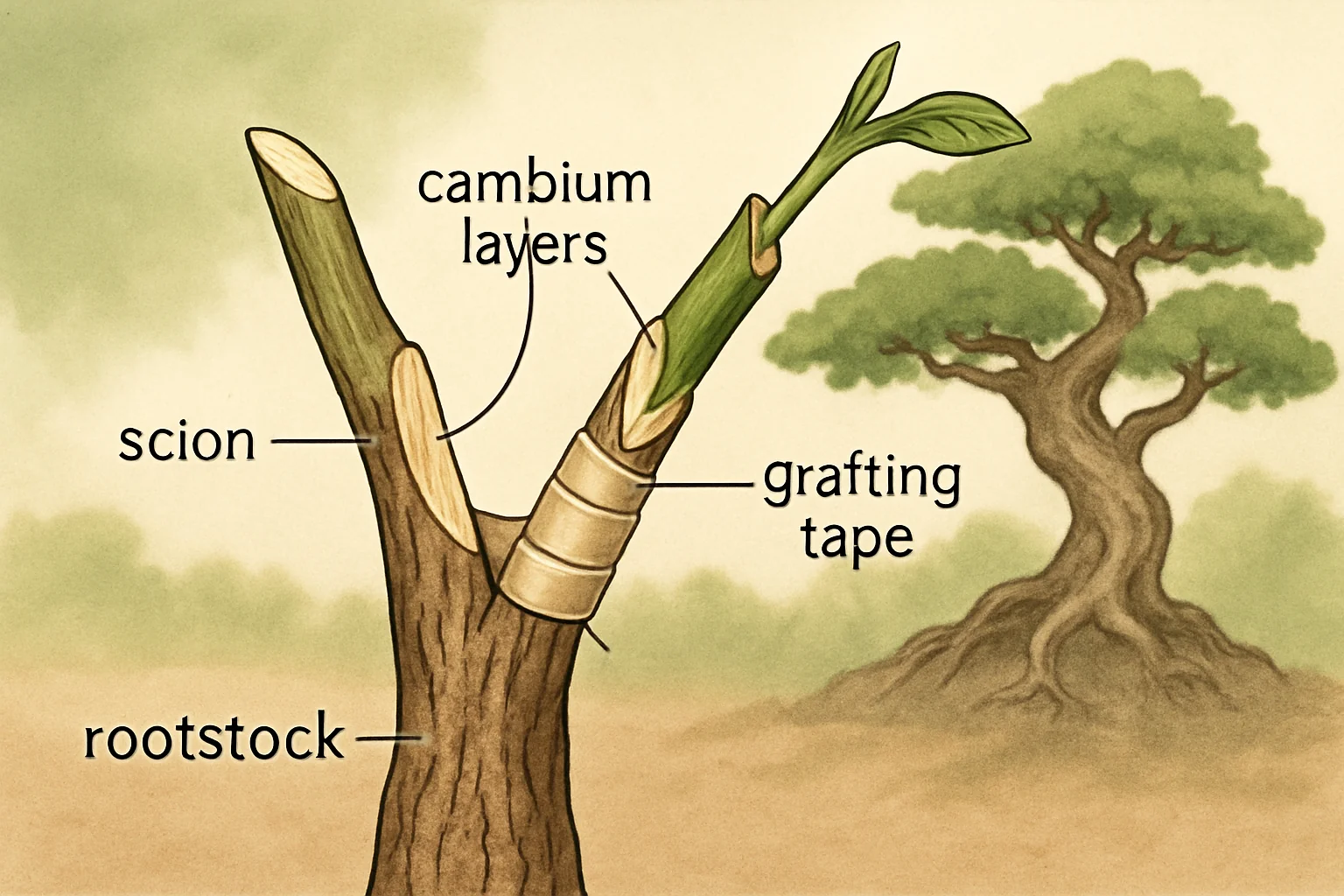
🛠️ How to Do It – Step by Step
- Select your rootstock (a strong, healthy tree).
- Choose your scion (the upper part, usually a branch from a bonsai you want to grow).
- Make matching cuts on both parts: a slanted cut on the rootstock and a corresponding cut on the scion.
- Align the cambium layers (the green tissue just under the bark) of both parts—this is the most important step!
- Wrap tightly with grafting tape or rubber bands to hold the parts together.
- Seal the cut with grafting wax to prevent infection and moisture loss.
- Wait for healing: After a few weeks, you should see the graft take. Once successful, remove the tape. 🌱
🌿 Best Bonsai Species for Grafting
- Pine (especially for classic styles)
• Maple (ideal for branching structure)
• Juniper (for unique designs)
• Ficus (great for tropical bonsai)
✅ Pro Tips
- Graft during spring when plants are actively growing.
• Clean your tools to avoid infection. 🧼
• Use approach grafting if you want to keep both the rootstock and scion alive while they fuse together.
Grafting opens up endless possibilities for customizing your bonsai, allowing you to shape and structure your tree exactly as you envision! 🌳🎨
🌿✨ Secret #3: Using Root Cuttings for Compact Bonsai Styles 🌱
Root cuttings are an excellent way to grow bonsai with a compact and bushy appearance. This technique is perfect for creating miniature trees that are full of character and style, all from a small piece of root. 🌱
🌱 What Are Root Cuttings?
Root cuttings involve taking a piece of a plant’s root system, encouraging it to grow into a new bonsai. The best part? Roots have the potential to form new shoots, creating a compact, multi-stemmed bonsai quickly. 🌳
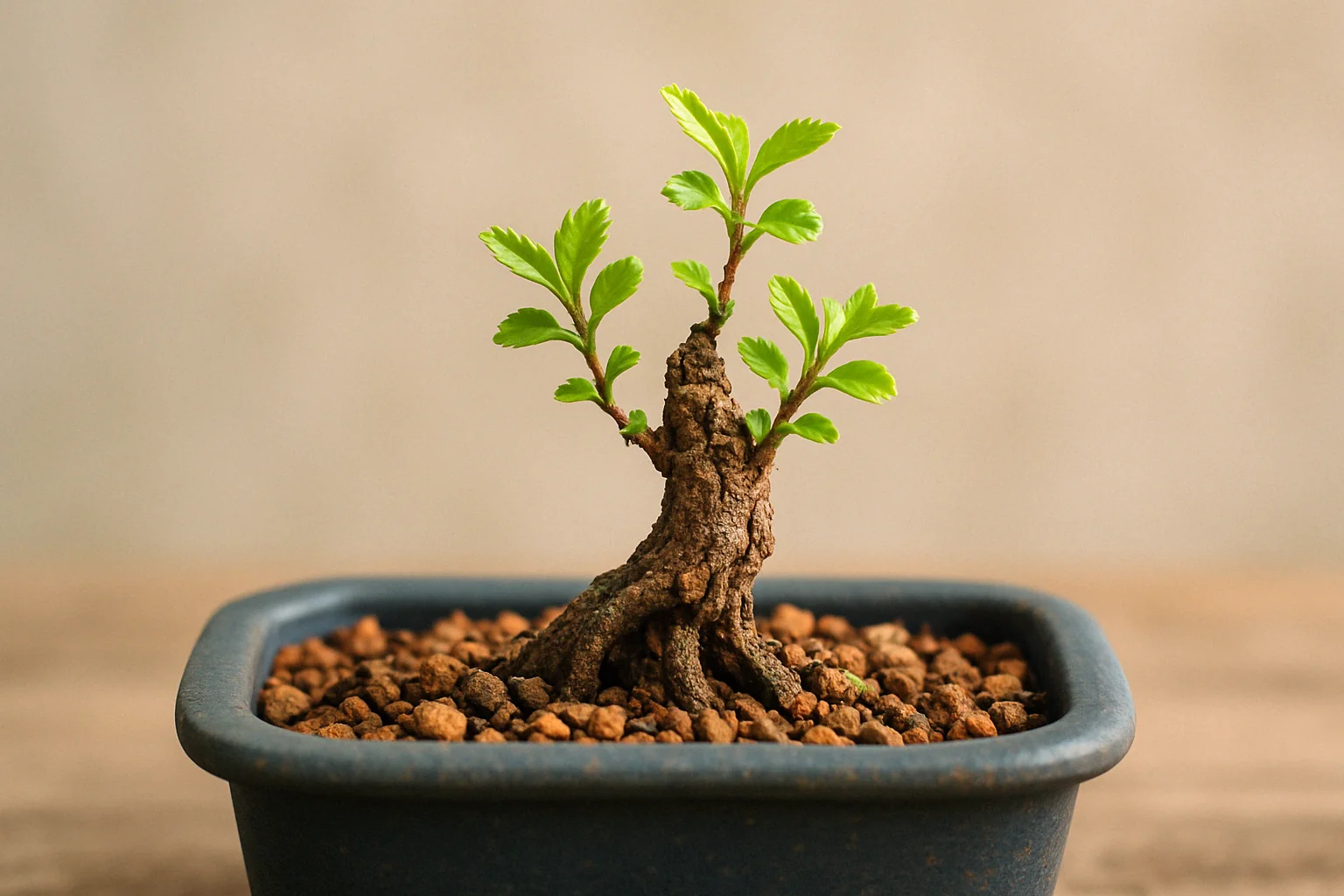
🛠️ How to Do It – Step by Step
- Choose a healthy bonsai or plant with a well-established root system.
- Dig up and cut a small section of the root (about 3–6 inches long). Make sure it’s a thick, healthy root.
- Trim any excess roots and plant the cutting in a pot filled with a well-draining bonsai soil mix.
- Water well and keep the soil consistently moist (but not soggy). 💧
- Place the pot in a warm, bright spot with indirect sunlight.
- Wait for shoots to appear—this could take several weeks. Once new growth starts, you can begin shaping your tree! ✂️🌱
🌿 Best Bonsai Species for Root Cuttings
- Ficus (especially for tropical bonsai)
• Boxwood (ideal for compact, formal bonsai)
• Elm (great for creating natural styles)
✅ Pro Tips
- Use sharp tools to cut the roots cleanly.
• Be patient—root cuttings can take time to sprout new growth.
• Keep the cutting in a humid environment to encourage root development. 🌿💧
Root cuttings are a fantastic way to create unique, bushy bonsai with minimal effort. It’s the perfect trick for compact styles and a truly personalized plant! This method is often highlighted in Advanced Bonsai Propagation Secrets for its simplicity and stunning results.
🌱🎨
❄️🌿 Secret #4: Propagating from Hardwood Cuttings in Winter
Propagating from hardwood cuttings during winter is a clever way to expand your bonsai collection while your trees are in their dormant phase. This method is ideal for deciduous species and helps you grow strong, healthy plants ready for the upcoming growing season. 🌳✨
🌱 What Are Hardwood Cuttings?
Hardwood cuttings are mature, woody branches taken from a bonsai plant during winter when it’s not actively growing. These cuttings root slowly but tend to be hardier and more resilient once established. 🌿
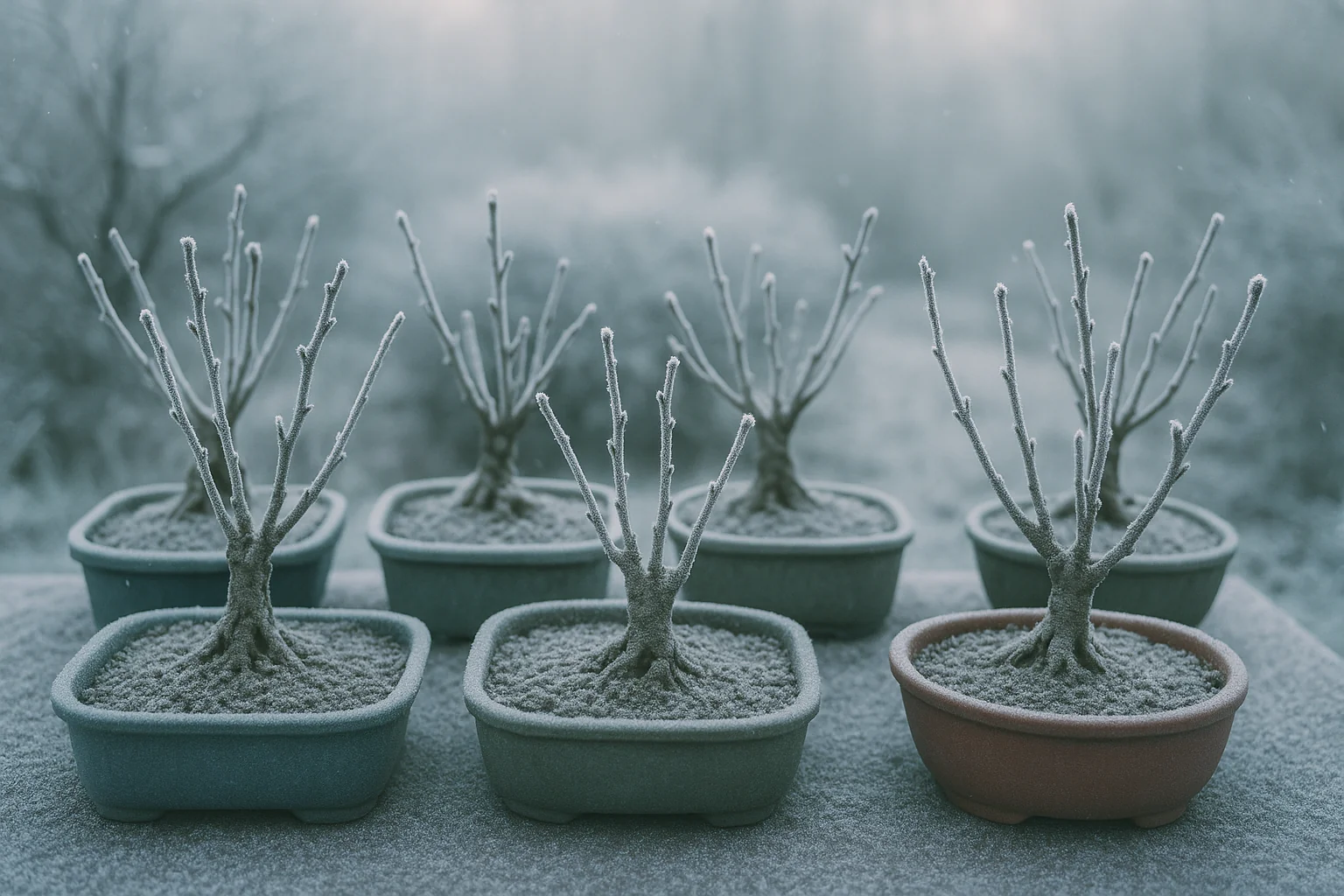
🛠️ How to Do It – Step by Step
- Select a healthy branch from a deciduous bonsai tree during late fall or early winter.
- Cut a 6-8 inch section of the branch, ensuring you take it from mature wood (not soft or new growth).
- Trim the cutting to include at least two leaf nodes (the spots where leaves emerge).
- Dip the cut end in rooting hormone to encourage root growth.
- Plant the cutting in a pot with well-draining soil.
- Water sparingly, keeping the cutting slightly moist (not too wet!).
- Place the pot in a cool, dark spot—cold temperatures will help the cutting enter dormancy and focus on root development.
- Wait for spring—in a few months, the cutting should begin sprouting new growth as the weather warms up. 🌱🌸
🌿 Best Bonsai Species for Hardwood Cuttings
- Maple
• Elm
• Hornbeam
• Cotoneaster
✅ Pro Tips
- Hardwood cuttings root slowly, so patience is key—don’t rush it! ⏳
• Keep the soil moist but not waterlogged—good drainage is a must.
• Use clear plastic bags or humidity domes to maintain moisture in dry winter air. 🌬️
Propagating from hardwood cuttings during winter is a rewarding challenge. With the right care, you’ll have strong new trees ready to thrive come spring! 🌿🌟
💧🌿 Secret #5: Encouraging Micro-Root Growth with Hormones and Moisture Control
One of the most effective ways to accelerate root development in bonsai propagation is by using rooting hormones and mastering moisture control. These two tools are crucial for encouraging micro-root growth, which is essential for strong, healthy bonsai. Techniques like these are part of Advanced Bonsai Propagation Secrets that experienced growers rely on.
🌱 Why Rooting Hormones?
Rooting hormones stimulate faster root growth by promoting the development of root cells. They help cuttings take root more effectively, leading to stronger bonsai with better overall health. 🌿
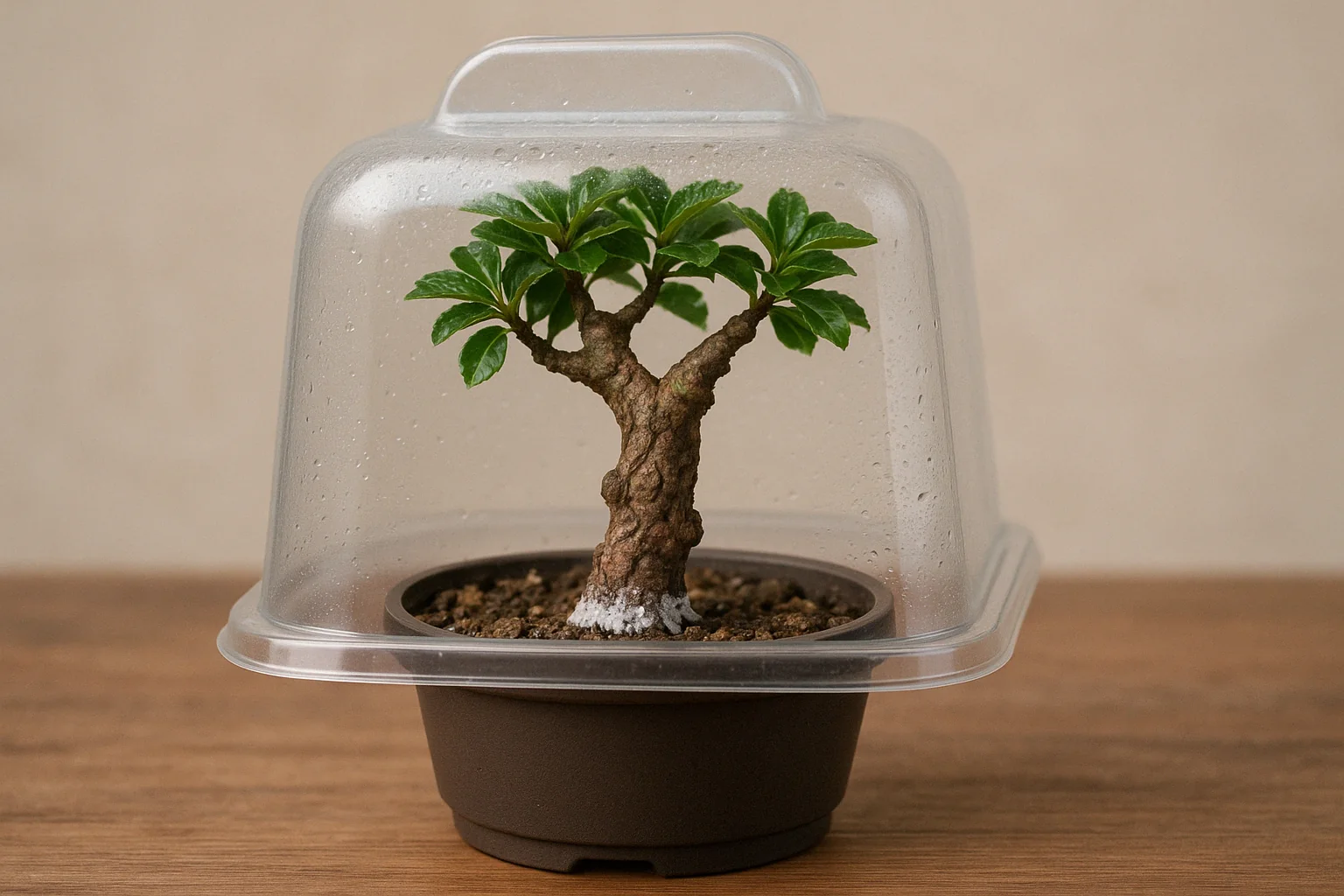
🛠️ How to Use Rooting Hormones – Step by Step
- Choose the right rooting hormone: You’ll find gels, powders, or liquids—powders are often the easiest to use.
- Dip the cutting’s base into the hormone, covering about 1–2 inches. Be careful not to overdo it!
- Shake off any excess to prevent mold and unnecessary buildup.
- Plant the cutting in a container with a well-draining bonsai soil mix.
💧 Mastering Moisture Control
Moisture is key when growing roots. Too little and the cutting dries out; too much and it rots. Finding the right balance is crucial!
🛠️ Tips for Moisture Control
- Humidity is your friend: Cover the pot with a clear plastic bag or humidity dome to lock in moisture. Ensure the plastic isn’t touching the cutting. 🌬️
- Misting: Mist your cuttings lightly with water to maintain humidity levels without soaking them. 🌧️
- Proper drainage: Ensure the pot has drainage holes to prevent excess water from collecting at the bottom. 🕳️
- Avoid direct sunlight: Keep cuttings in a spot with indirect light, as direct sun can dry them out too quickly. ☀️
✅ Pro Tips
- Use fresh hormones for best results. Old hormones lose their effectiveness.
• Check moisture levels regularly to avoid drying out or over-watering.
• Be patient—rooting can take time, but with the right conditions, your bonsai will thrive! 🌿🌟
By combining rooting hormones with proper moisture control, you give your cuttings the best chance for rapid and healthy root growth. It’s a key secret to mastering the art of bonsai propagation! 🌱
🌿🌱 Post-Propagation Care: Turning New Growth into Bonsai 🌳✨
After successfully propagating your bonsai, the real work begins! Post-propagation care is crucial to ensure your new plant develops into a healthy, strong bonsai. This is where Advanced Bonsai Propagation Secrets truly come into play. Here’s how to guide your fresh growth into a beautiful miniature tree. 🌳✨
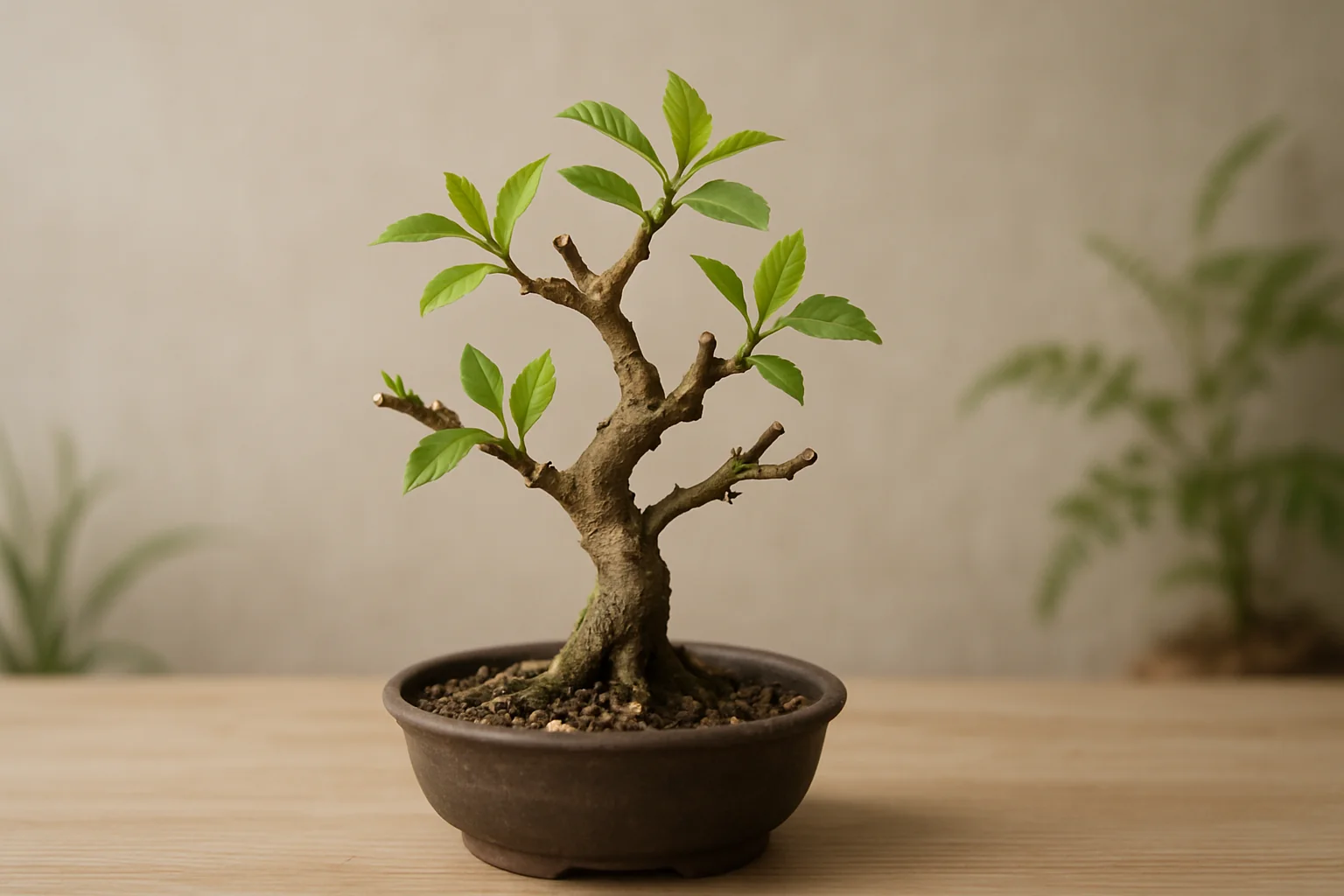
🌱 Transitioning New Growth into Bonsai
Once your cutting or propagated tree has developed roots and shows new growth, it’s time to shift focus to long-term care. The key is to nurture the plant’s growth while encouraging it to take on that classic bonsai form.
🛠️ Key Steps for Post-Propagation Success
- Choose the Right Pot:
- Select a bonsai pot with good drainage. It should be large enough to allow the roots to spread but not too large to overwhelm the young plant. 🪴
- Repot if Necessary:
- If the roots have become too cramped, repot the plant to give it more space to grow. Use a well-draining soil mix designed for bonsai. 🌱
- Trim and Shape:
- Start pruning once the plant has enough leaves and stems. Use pruning shears to remove any unwanted growth, focusing on shaping the tree’s structure. ✂️
- Start Wiring for Style:
- Once your tree has a sturdy trunk, you can begin using bonsai wire to gently shape the branches and trunk into your desired form. Make sure not to wire too tightly to avoid damaging the plant. 🔗
- Maintain Consistent Care:
- Water regularly, but ensure the soil isn’t waterlogged. Bonsai trees prefer slightly dry conditions. 💧
- Keep your tree in indirect sunlight and maintain a balanced environment for steady growth. 🌞
- Fertilize monthly with a balanced fertilizer during the growing season to encourage healthy growth. 🌿
💡 Pro Tips for New Bonsai Care
- Avoid overwatering: Check soil moisture by sticking your finger into the soil—only water if it’s dry about an inch deep. 💧
- Temperature and Humidity: Keep your bonsai in an area with moderate temperatures and humidity. Indoor bonsai often thrive with humidity trays or small humidity domes. 🌬️
- Be Patient: Bonsai are slow-growers. Take your time to shape and care for your plant, and enjoy the process! 🕰️
By providing the right care post-propagation, you’ll help your new growth transform into a stunning bonsai masterpiece. With time, patience, and proper techniques, your bonsai will flourish into the perfect tree! 🌳✨
⚠️🌿 Common Mistakes to Avoid in Advanced Bonsai Propagation
Unlocking Advanced Bonsai Propagation Secrets can dramatically improve your success in growing miniature masterpieces. Even the most experienced bonsai growers can make mistakes when it comes to propagation. Avoiding these common errors can save you time, effort, and frustration, ensuring your bonsai trees thrive from the start. 🌱✨ In this guide, we’ll dive deep into refined techniques, expert strategies, and subtle nuances that separate average bonsai propagation from true mastery.
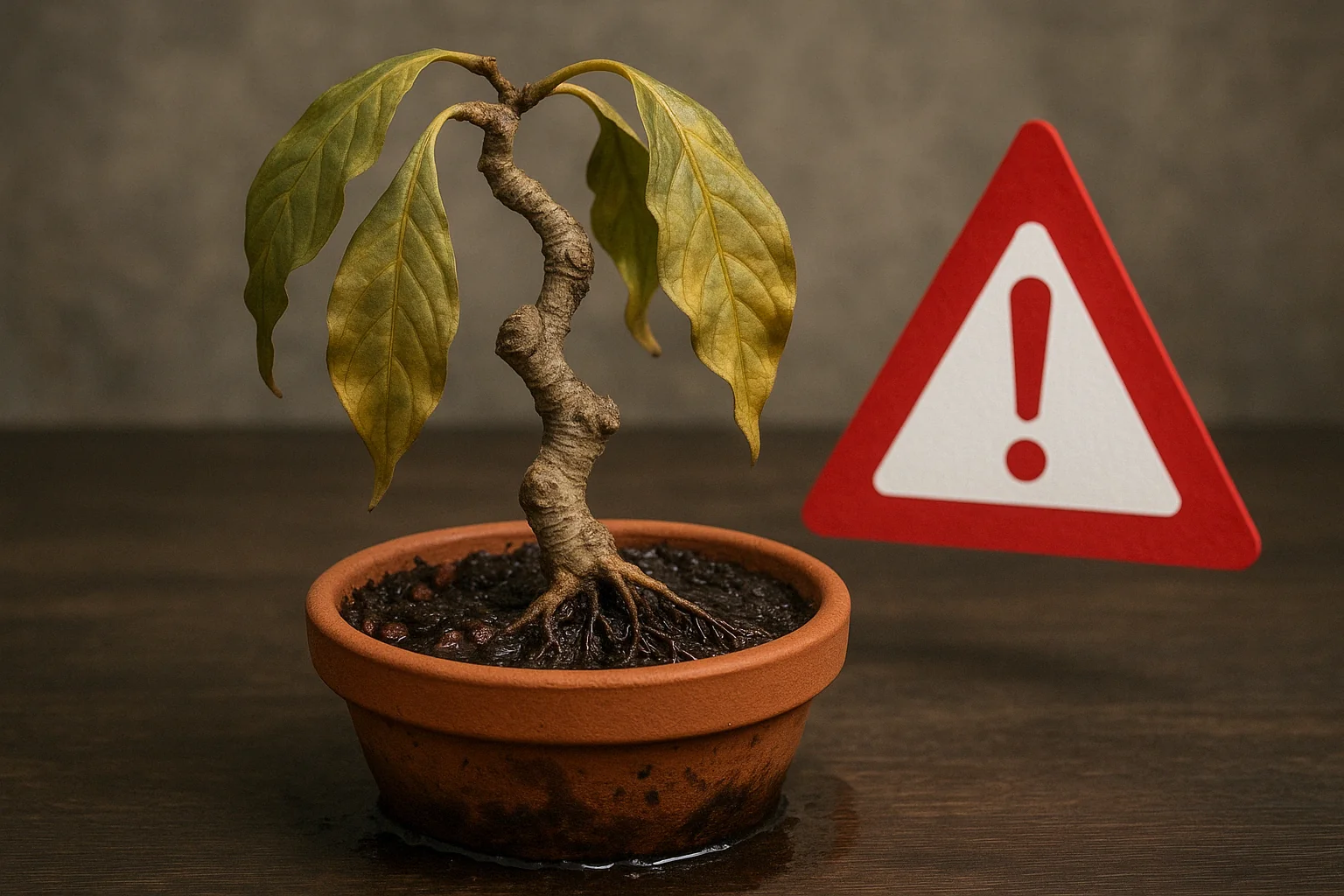
❌ 1. Using Poor-Quality Cuttings
A common mistake is selecting weak or unhealthy cuttings. Always choose healthy, mature branches or roots to ensure your propagation is successful. Sturdy starting material leads to stronger bonsai. 🌿
❌ 2. Overwatering or Underwatering
Watering is a fine balance. Too much water can cause rot, while too little will dry out the cutting. Keep the soil moist, but never soggy. Consistent, controlled moisture is key to root development. 💧
❌ 3. Not Using Rooting Hormones Properly
Rooting hormones can significantly speed up the rooting process, but applying them incorrectly can harm your cuttings. Be sure to follow the instructions carefully and avoid overuse—too much hormone can burn the tissue. 🌱
❌ 4. Improper Temperature and Light Conditions
Propagation requires a warm environment with indirect sunlight. Too much direct light can dry out the cutting, while too little can stunt growth. Similarly, temperature fluctuations can stress the plant. Keep things consistent for optimal success. 🌞🌡️
❌ 5. Failing to Maintain Humidity
Most cuttings require high humidity to root successfully. If the air around them is too dry, the cutting will fail to establish roots. Use a humidity dome or cover the pot with a plastic bag to lock in moisture. 🌬️
❌ 6. Not Pruning Early Enough
Pruning is an essential part of bonsai care, but waiting too long to start shaping your tree can result in undesirable growth. Start pruning early, even while your bonsai is young, to encourage the right structure and prevent too much leggy growth. ✂️
❌ 7. Not Using Proper Soil
Bonsai require well-draining soil to avoid root rot. Regular garden soil holds too much moisture, which can suffocate your bonsai roots. Always use a soil mix specifically designed for bonsai trees. 🌿🪴
❌ 8. Lack of Patience
Bonsai propagation takes time. If you rush through the process, you could cause stress to your plant or fail to create the desired shape. Patience is crucial—let the plant develop naturally and enjoy the slow, rewarding journey! 🕰️
✅ How to Avoid These Mistakes
- Research each method carefully before starting, and follow best practices. 📚
- Monitor your cuttings regularly, checking for signs of overwatering or dehydration. 💧
- Be patient—bonsai trees take time to develop, and the process should be slow and steady. ⏳
By avoiding these common mistakes, you’ll set yourself up for success in your advanced bonsai propagation journey. Keep learning, stay patient, and enjoy the rewarding experience of growing beautiful bonsai! 🌳💚
🌿✨ Final Thoughts
Mastering advanced bonsai propagation secrets takes practice, patience, and a deep understanding of your plants. From grafting and air layering to using rooting hormones and moisture control, each technique opens up exciting possibilities for shaping your bonsai into a unique masterpiece. 🌳🎨
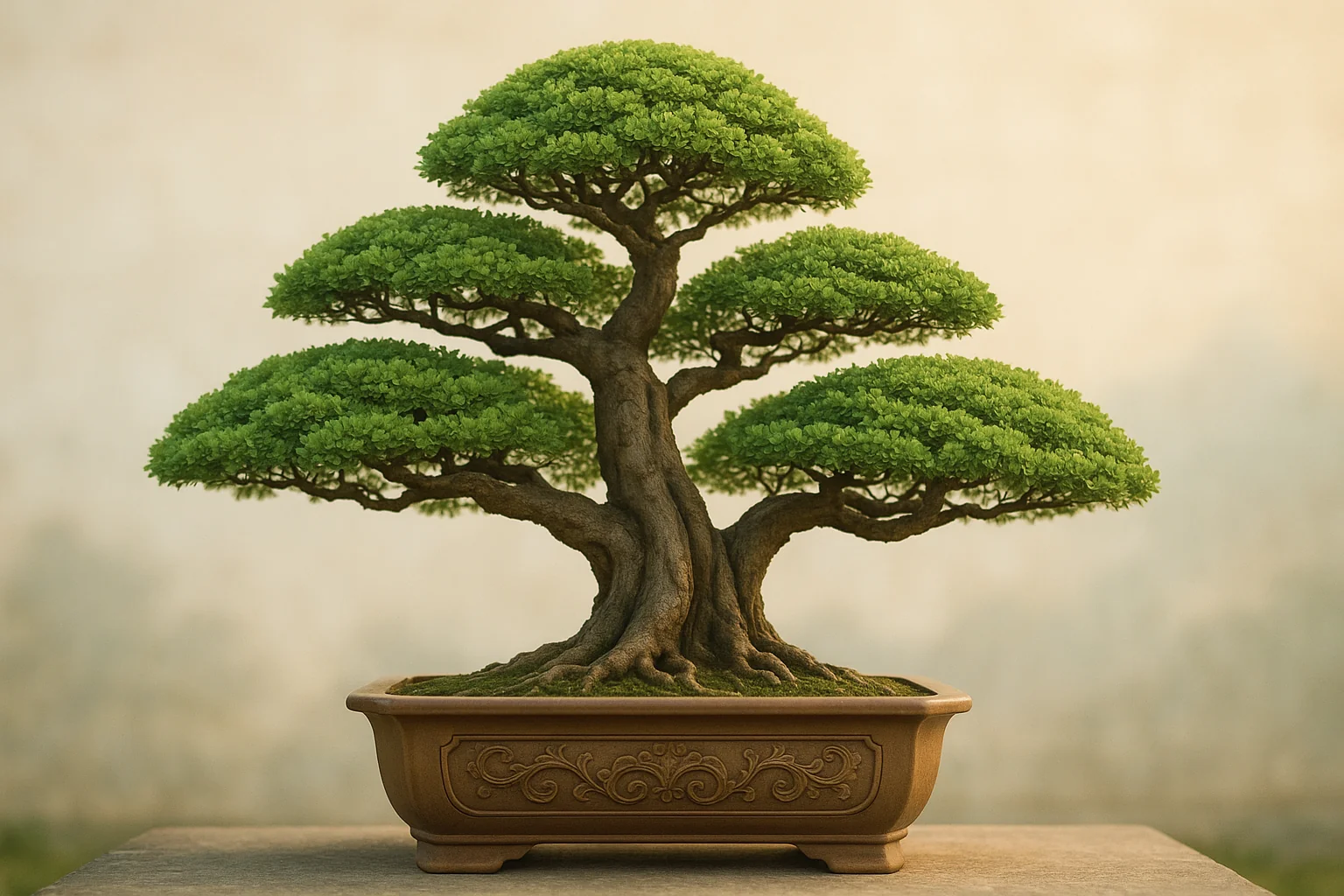
Remember, bonsai propagation is a journey, not a race. While it may seem challenging at times, with consistent care, the rewards are well worth it—healthy, thriving bonsai that can last for generations. 🌱
So, whether you’re an experienced grower or just getting started, use these tips to elevate your bonsai propagation skills and watch your creations flourish. Keep experimenting, stay curious, and most importantly, enjoy the process of nurturing life in miniature! 🌟
Happy bonsai growing! 🌿
Frequently Asked Questions (FAQ)
What is the best time to propagate bonsai?
The best time for bonsai propagation is during the growing season (spring and early summer) when the plant is actively growing. However, some techniques like hardwood cuttings can be done in winter when the plant is dormant. 🌞❄️
Can I propagate any type of bonsai?
Most bonsai species can be propagated, but some are easier than others. Common species like Ficus, Maple, and Elm propagate well, while others, like Pines, may require more specialized techniques. 🌳
How long does it take for bonsai cuttings to root?
Rooting times vary by species and technique, but generally, it takes anywhere from a few weeks to a few months for bonsai cuttings to form roots. Patience is key! ⏳
Do I need special equipment for bonsai propagation?
While not strictly necessary, having tools like pruning shears, rooting hormone, bonsai wire, and a humidity dome can make the process easier and more successful. 🌿🛠️
How often should I water my bonsai cuttings?
Water your bonsai cuttings regularly, but don’t let the soil become soggy. It should be moist, but well-drained. The frequency will depend on the environment, but check the soil every few days to ensure it’s not drying out. 💧
Can I use regular soil for bonsai propagation?
No, regular garden soil is too dense and retains too much moisture. Use a well-draining bonsai soil mix to ensure proper root development and avoid root rot. 🌱
What can I do if my bonsai cutting isn’t rooting?
If your cutting isn’t rooting, try adjusting the humidity, temperature, or light conditions. You might also need to use a fresh batch of rooting hormone or check for proper soil moisture. If necessary, try different propagation techniques like air layering or grafting. 🌿
How can I shape my bonsai after propagation?
Once your bonsai has established roots and growth, you can start shaping it by pruning, wiring, and repotting. Be patient and gentle with the shaping process, as the plant is still young and developing. ✂️🌳
